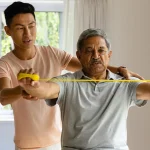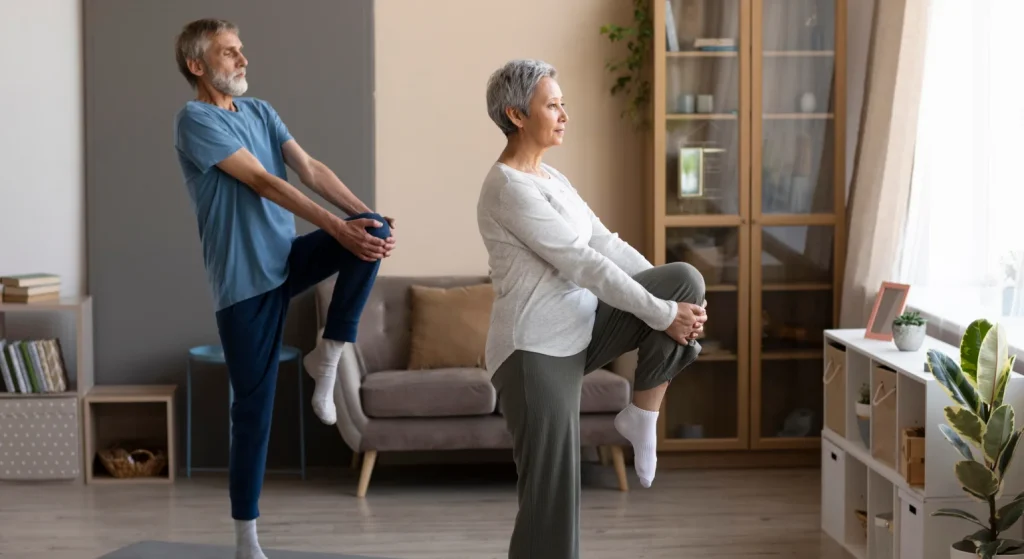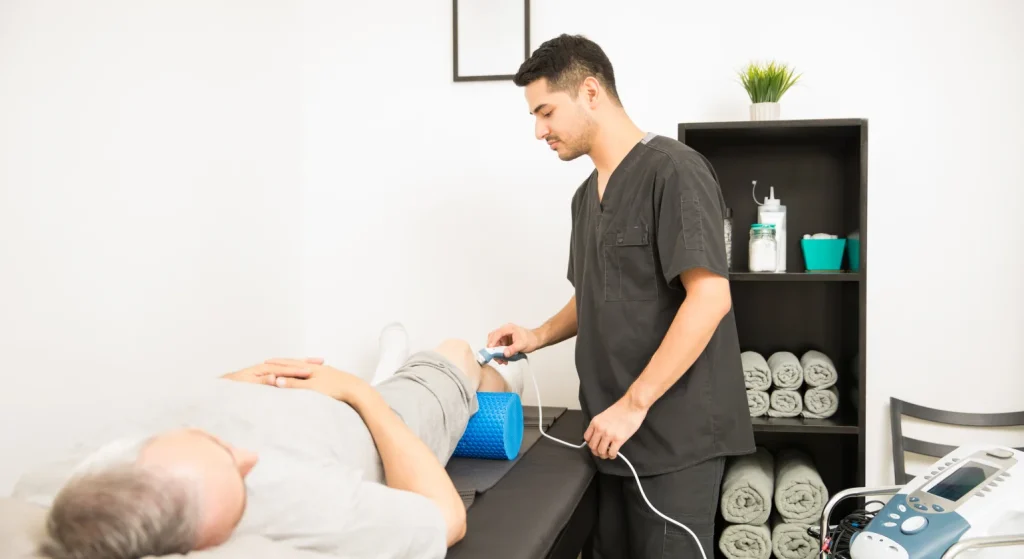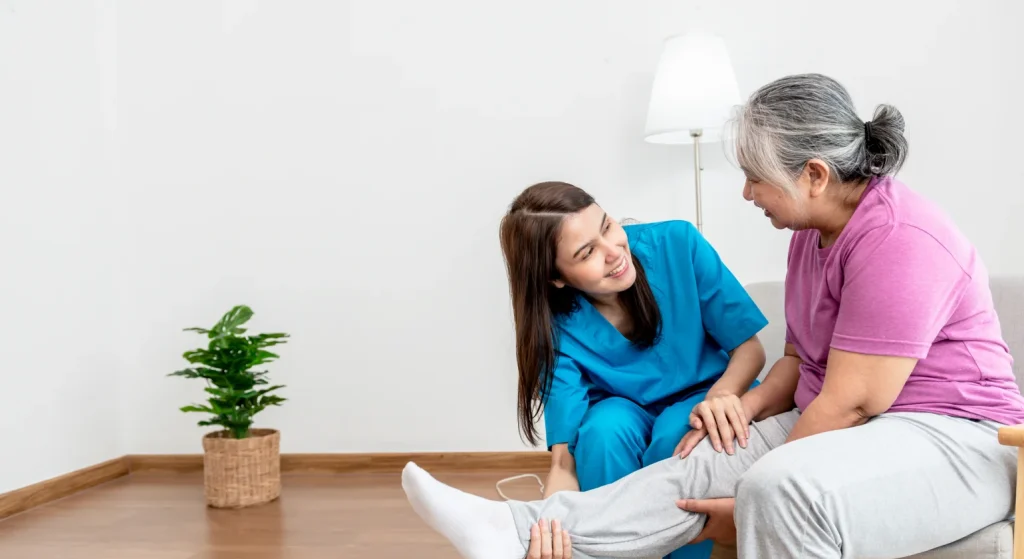If a family member or friend is confined to bed,whether because of age, illness and/or surgery, it’s not just their physical well-being which suffers. The emotional health, as well as their independence and self-esteem, can be impacted. One of the best practice to assist them during this period is via physiotherapy at home.It’s not only for those recovering from surgery or injury. For bedridden patients, physiotherapy can make the difference between comfort and discomfort, mobility and stiffness, or feeling neglected versus feeling truly cared for by a therapist.
Real Benefits of At-Home Physiotherapy for Bedridden Patients
- Gentle Movement helps to prevent stiffness and contractures-
It is a common practice to perform regular exercises, in which the physiotherapist gently moves the patient’s legs, helps keep joints flexible and active, even when the patient isn’t able to walk on their own. - Improves blood Circulation
Training and techniques for positioning help to maintain blood flow, which reduces the possibility of swelling and blood clots. - Lowers the risk of pressure Bedsores
The physiotherapist can guide the caregivers in repositioning patients with care, and regularly this is essential to avoid painful bed sores. - Enhances the Lung Function – Chest physiotherapy help to prevent the accumulation of fluid in the lungs which may result in pneumonia.
- Helps to ease pain naturally
Techniques such as gentle massages, stimulation of muscles or even simple movements can aid in reducing inflammation and pain without the need for high doses of medications.
What Does a Physiotherapy Session at Home Look Like?
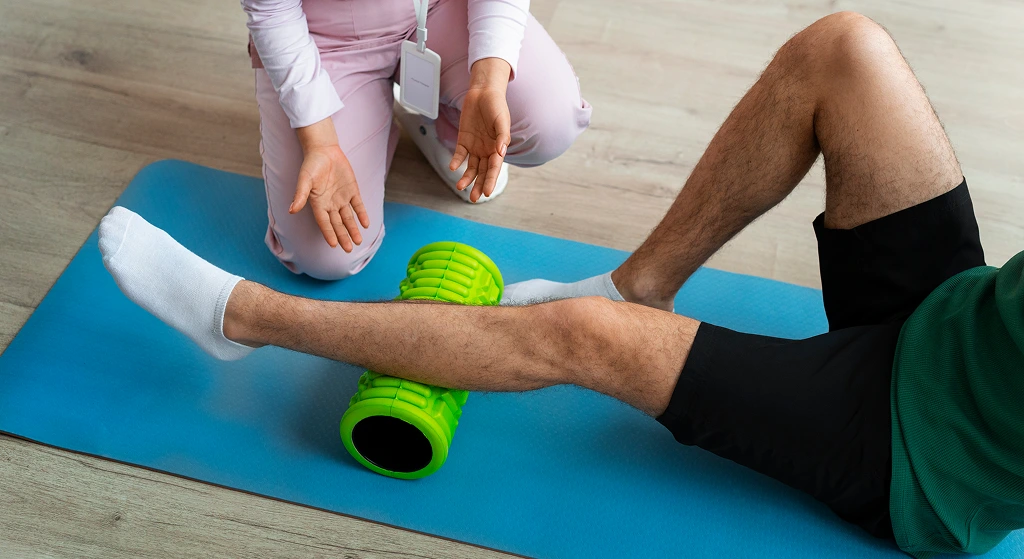
Each session is tailored according to each patient’s particular medical condition and demands. Some common techniques include:
- Auxiliary and passive motions of limbs to reduce stiffness.
- A light stretching to increase the length of muscles.
- Exercises to breathe for improving the condition of your lungs.
- Rolling and positioning training helps the patient understand how to move within the mattress, decreasing the pressure on their back and increasing patient comfort.
- Training exercises for strength for upper-body strength:if the patient is able to control tiny moves.
- Heat pads, electrotherapy, or heat to relieve pain (if necessary and safe for use).
The entire process is performed with great treatment, according to the pace of the patient, and with the least amount of pressure or discomfort.
Caregivers Are a Vital Part of the Process
Home physiotherapy doesn’t have to be just concerned with the visit of a therapist. It’s about the things that happen between sessions. Caregiver assistance is what caregivers do. Therapists frequently train relatives or caregivers on how to keep moving to ensure correct positioning and aid with breathing and stretching exercises. This aids in maintaining progress and provides patients with more regular treatment.
How Often Should Physiotherapy Be Done?

There’s no set of rules. Patients may require appointments three to five times per week for the first few weeks, particularly if they’re recuperating from an illness or surgery. Other patients may benefit from smaller sessions when a regular schedule is in place. Therapists typically assess how well the patient is doing every couple of weeks and modify the program according to the needs.
Trust Matters: Dr. Harish Grover and Painflame Clinic
If you’re searching for an experienced physiotherapist in gurgaon for home physiotherapy Dr. Harish Grover of Painflame Clinic offers compassionate and customised treatment in the privacy of your own home; experienced for years in rehabilitation and physiotherapy the Dr. Harish Grover understands the unique difficulties that patients with disabilities have to face. The way he approaches the problem is not only about recovery from physical injuries as much as it is about security, dignity and psychological well-being, making recovery a bit easier for both the patient and their family members.
Frequently Asked Questions (FAQs)
Can home physiotherapy be considered suitable for bedridden patients?
If done by an expert, trained person, it’s not just safe but also extremely beneficial to avoid issues.
What is the best time to begin physiotherapy with bedridden people?
It is recommended to begin in the early stages to ensure muscle health and to avoid problems like stiffness, bedsores.
How long is a typical fitness session at home?
The majority of sessions run 30-to-60 minutes, based on the health of the patient as well as their energy levels.
What happens if a patient has no movement at all?
That’s okay. The therapist uses methods of passive movement to ensure joints are flexible and increase circulation.
